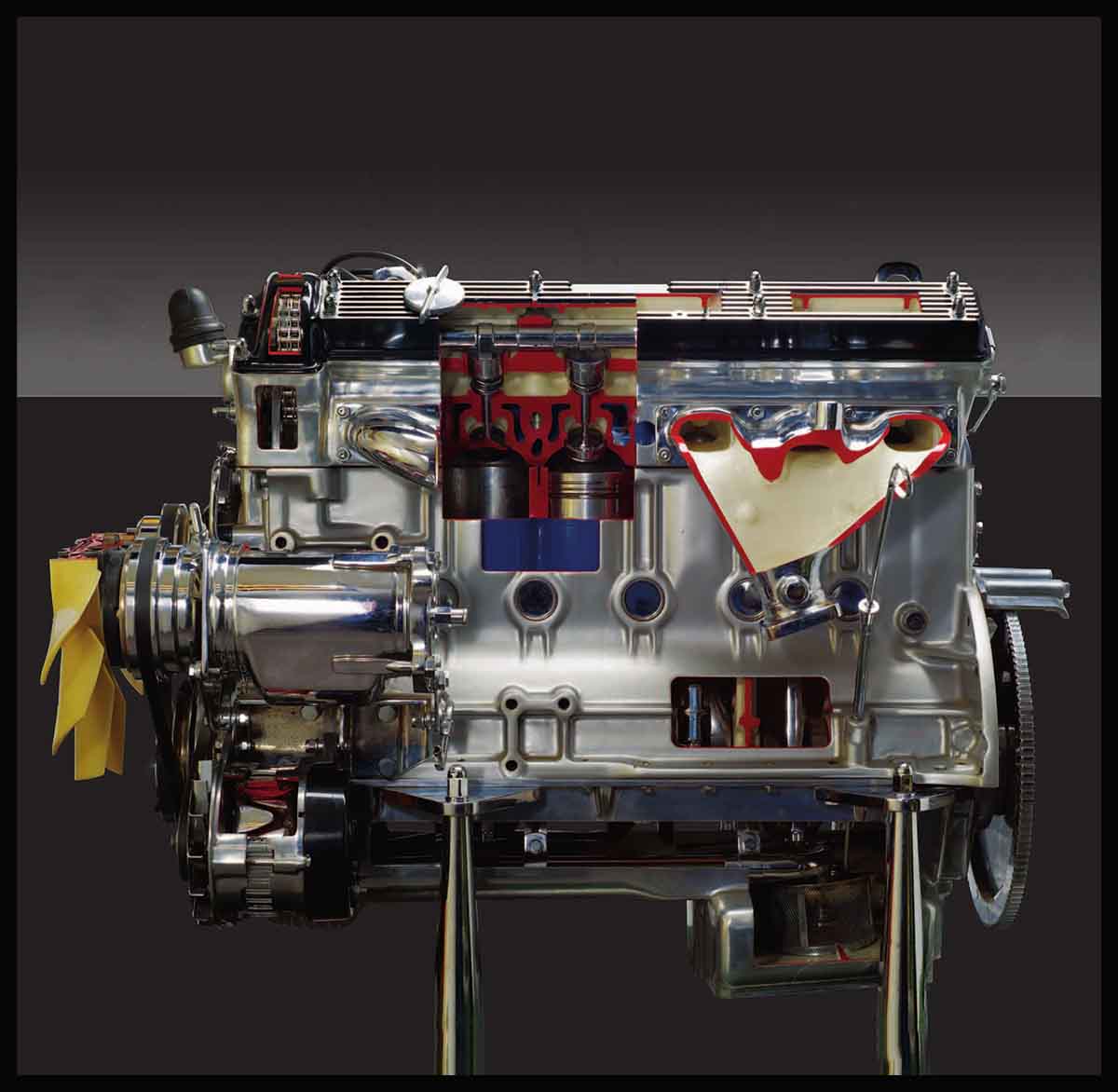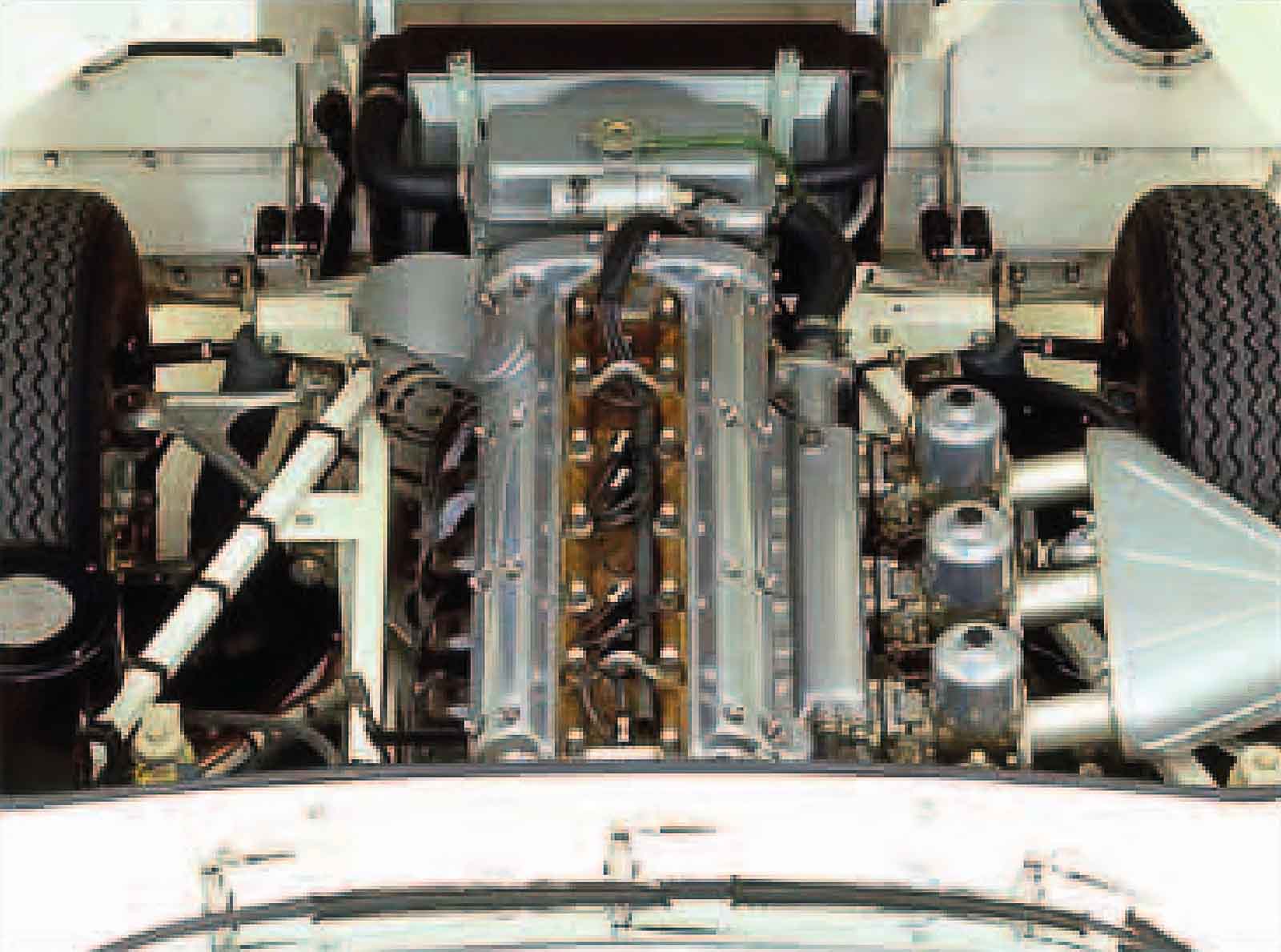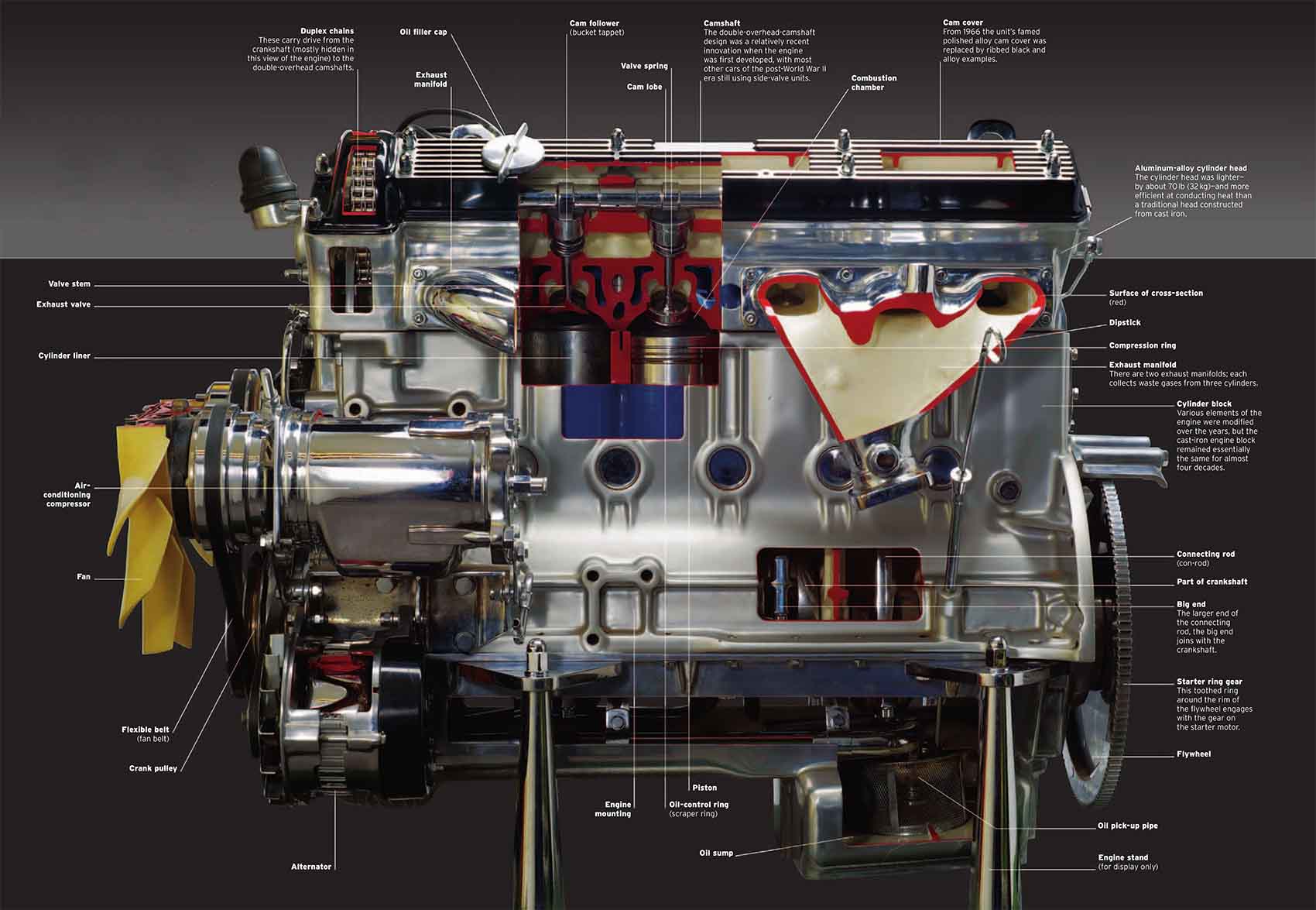
Jaguar XK—Straight-Six
One of the most iconic power plants in automotive history, Jaguar’s XK straight-six was light, powerful, reliable-and essentially unchanged for almost 40 years. As well as featuring in the original XK120, the unit was used in XK140, XK150, and E-type sports cars, C- and D-type racers, and several sedan ranges.
AN ICONIC SPORTS-CAR ENGINE
Before World War II, when Jaguar was known as SS Cars, engines had been bought in from rival company Standard. The idea that Jaguar should produce its own engine was born during the war. Led by company founder William Lyons, an engineering team including William Heynes, Walter Hassan, and Claude Baily planned the engine in minute detail while on fire-watch duty on the roof of Jaguar’s Coventry factory. Harry Weslake was brought in to create the crucial aluminum cylinder-head design. The XK engine finally freed the renamed Jaguar Cars from dependence on outside suppliers.

ENGINE SPECIFICATIONS
| Dates produced | 1949-1986 |
| Cylinders | Straight-six |
| Configuration | Front-mounted, longitudinal |
| Engine capacities | 2.4 liter, 2.8 liter, 3.4 liter, 3.8 liter, and 4.2 liter |
| Power output | 133 bhp (2.4) to 265 bhp (3.8 and 4.2) |
| Type | Conventional four-stroke, water-cooled, gas engine with reciprocating pistons, distributor ignition, and a wet or dry sump |
| Head | dohc actuated by pushrod and rocker; two valves per cylinder |
| Fuel System | Triple HD.8 SU carburetors |
| Bore and Stroke | 3.42 in x 4.17 in (87 mm x 106 mm) |
| Power | 260 bhp @ 4,000 rpm |
| Compression | Ratio 9.0:1 |

Greater depth, more power
The cylinder head on Jaguar’s straight-six is especially deep to accommodate two large valves per cylinder. Larger valves allow more fuel-air mixture to be drawn into the cylinder, and make it easier for exhaust gases to be expelled. This improves the efficiency of the combustion process.
It is a quote. The Definitive Visual History Of The Automobile 2011




